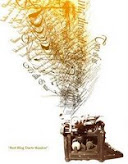There are many ways to make stained-glass, however, and each creates a different effect.
One way that glass makers create stained glass is by attaching a blob of colored glass to a tube and then blowing until the glass takes the shape of a cylinder, like a bottle. Then the glass cylinder is cut open and flattened to form a sheet of stained glass.
Another way is to place the ball of hot, colored glass into a spinner to flatten it. This causes the sheet of glass to have rings in it. It will never be completely flat but the unevenness lets the light flow through differently than if the glass were flat.
 The hot glass, once colored, can also be laid out and rolled flat. This creates texture in the glass which makes it difficult to see through. The glass in the picture to the left was made by rolling the glass until it was flat.
The hot glass, once colored, can also be laid out and rolled flat. This creates texture in the glass which makes it difficult to see through. The glass in the picture to the left was made by rolling the glass until it was flat.To make a stained-glass window, an artist first designs the picture he wants to create, then uses small pieces of colored glass to make pictures or designs. He cuts the glass to the right size and shape and then uses special glass to paint the details of faces or animals. The artist then solders the pieces of glass together by using a tool to heat and melt strips of metal to hold the glass together.
An artist can also make an entire stained-glass window by painting on clear glass with special paint.
 Stained glass is used mostly in the windows of churches and cathedrals so many of the windows show religious scenes. The window shown here, from Santa Maria sopra Minerva in Florence, Italy, depicts the twelve apostles. If you have never been inside a church or cathedral, the light shines through the stained-glass windows and bathes the walls in color. As you can see, the inside of the building remains somewhat dark so lamps are sometimes used even during the day.
Stained glass is used mostly in the windows of churches and cathedrals so many of the windows show religious scenes. The window shown here, from Santa Maria sopra Minerva in Florence, Italy, depicts the twelve apostles. If you have never been inside a church or cathedral, the light shines through the stained-glass windows and bathes the walls in color. As you can see, the inside of the building remains somewhat dark so lamps are sometimes used even during the day.








2 comments:
That is a very beautiful picture!
Thanks. I got lucky with that one. It's not even blurry.
Post a Comment